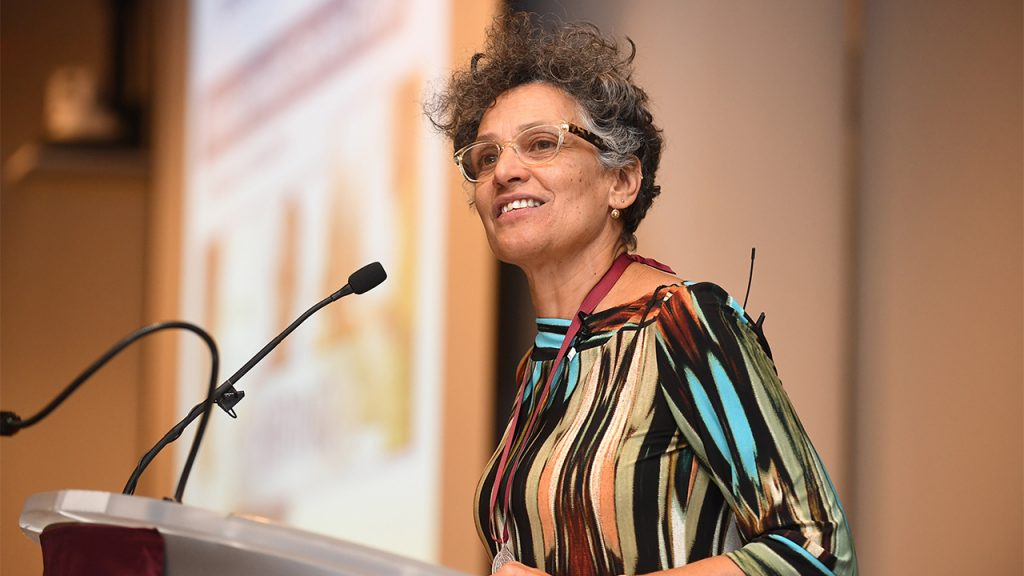Bassett came to Fordham’s Lincoln Center Campus on Nov. 18 to deliver the Sapientia et Doctrina Lecture to celebrate the University’s Dodransbicentennial, as well as the Graduate School of Social Service’s (GSS) centennial.
Father McShane said that the heritage and work of GSS represent the “underlying values of the republic and the republic will endure.
“It will endure and emerge because of the hard work done by women and men like you,” he said to the audience of social workers.
Travis then delivered a lecture that cast an unflinching eye on how race equity and social justice, or lack thereof, affects the health of underserved communities and racial minorities in particular.
“In our city it is too often the black and Latino communities that don’t get what they need,” said Bassett, adding that those communities experience a higher burden of mental health issues, heart disease, asthma, and diabetes. She said that one’s race affects life expectancy and susceptibility to illnesses.
“It’s not genetics; it’s due to the social contexts of race,” she said.
She pointed out that premature morality is considered to be 65 years of age and the life expectancy for the white population hit 65 in the 1940s. Black women hit a life expectancy of 65 in the 1950s. But black men didn’t reach that life expectancy until 1994. Also, mortality rates for African Americans in the highest income bracket didn’t surpass lowest income bracket for whites until 1990.
“We are not losing lives because of microbes or bad habits,” she said. “It’s because of the way our society is structured. It’s true across the nation and it’s true in our city.”
She said that racial segregation in New York City is such that it is easy to correlate health disparities and race on a map. In one graphic, she showed life expectancies along several subway routes. At a No. 6 Train stop in Murray Hill the life expectancy is 85 years of age, while six stops north in East Harlem the life expectancy drops 9 years to 76.
She then pointed to four colored maps of New York where dark orange shading highlighted the city’s “sickest neighborhoods.” One focused on asthma hospitalization for children, while another displayed deaths due to HIV-AIDS. The final two highlighted diabetes deaths and drug related hospitalizations. In each, the dark orange fell on the same regions: poor neighborhoods of color.
“These illnesses have nothing to do with each other in terms of biological pathways, so if there is anything we need to see that shows there are structural differences that effect the distribution of health outcomes across our city, it’s maps like these,” she said.
When officials tried to explain health disparities between races through genetics, science refuted the argument, she said. Current theory focuses on lifestyle choices. The reasoning became “poor people don’t eat right, they smoke,” she said, adding the poor don’t get to make housing choices that, in turn, affect their health.
“Nobody says I want to live in a rodent infested house and nobody says I want to live in a neighborhood with terrible air quality,” she said. “These aren’t personal choices; these are social structures that are produced and reproduced.”
Bassett said that in her role she “wants to make a claim on advocacy” and sees it as a part of her job as health commissioner to speak out on injustices affecting people’s health.
“Health is strongly tied to neighborhoods, as are many of the forms of racism,” she said. “We can only be as good as the systems we work in and no field is immune from racism.”
“But these are our neighbors and our relatives, we have many challenges arising in the form of democratic challenges, but we can meet the challenge.”
The lecture can be viewed in its entirety here at Fordham Libraries.


